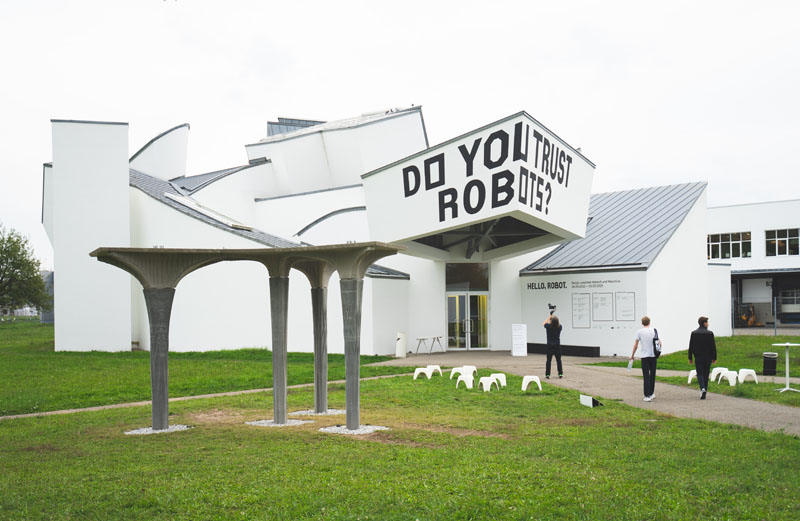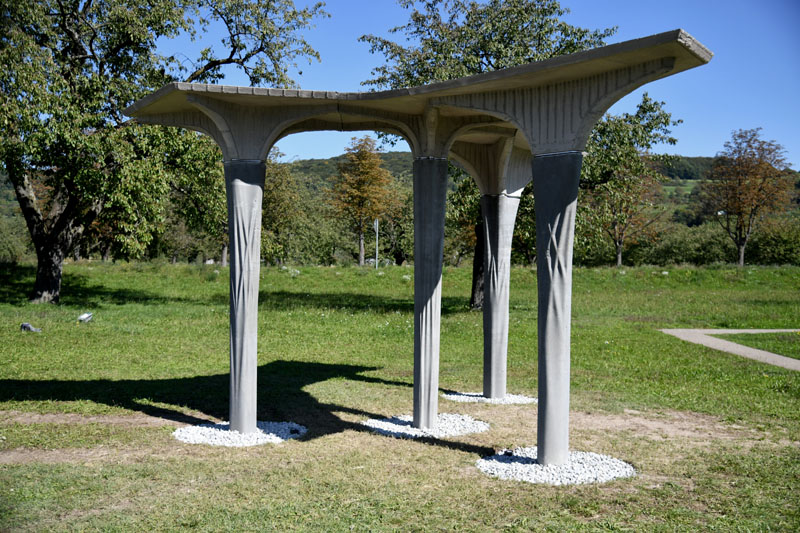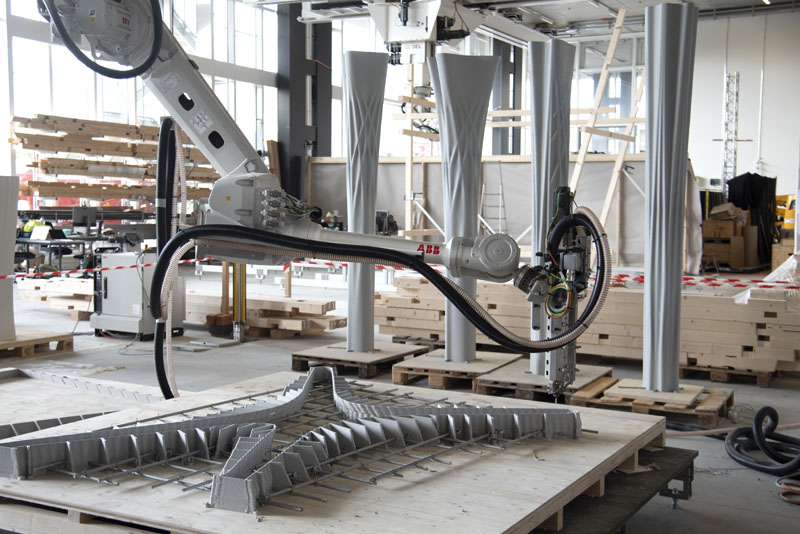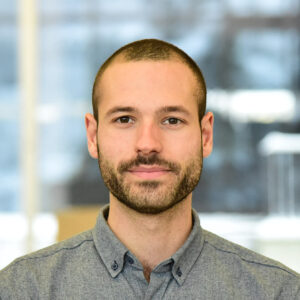The Eggshell Pavilion is a structure designed and fabricated in collaboration with students from the MAS course in Architecture and Digital Fabrication at ETH Zurich, currently exhibited at the Vitra Design Museum in their new “Hello, Robot” exhibition.
The Eggshell Pavilion explores how digital design techniques and robotic 3D printing enable the creation of freeform concrete structures using recycled ultra-thin formwork. The pavilion’s design and fabrication are based on the Eggshell technology, which relies on computational methods to design algorithms that generate both the geometry of the structure and the fabrication data for the 3D-printing process. The combination of computational design and robotic fabrication allows designers to shape concrete elements efficiently, in contrast to traditional formwork processes that are often labour- and cost-intensive.
The ultra-thin formwork for the building elements of the Eggshell Pavilion is only three to five millimetres strong. It is made from glass fibre reinforced PET-G partly recycled from previous Eggshell formworks. It took approximately six hours to print each of the four columns and up to sixteen hours to print each of the four slabs. Both the columns and the floor slabs are reinforced with conventional steel reinforcement. They are connected using reversible connections, which allows the pavilion to be dismantled for reassembly in another location.
The elements are cast from two different types of concrete. The columns are cast from fast-setting concrete using a digitally controlled casting process. The fast-setting concrete reduces the pressure on the formwork to a minimum, making it possible to use a thin 3D-printed formwork without risk of breakage. The floor slabs, on the other hand, are cast from conventional self-compacting concrete, as there is only limited formwork pressure because of the low height. Once the concrete has fully hardened, the formwork is removed, washed, shredded, and re-compounded for reuse in new 3D prints.
The construction emphasises the design possibilities offered by 3D-printed formwork combined with conventional reinforcement and assembly methods. It demonstrates how the Eggshell technology can be used as an industrially scalable system for material-efficient concrete structures, paving the way towards a more sustainable use of concrete in construction. Check out the video below to learn more!
(This article originally appeared on the Gramazio Kohler Research webpage.)
The Eggshell Pavilion explores how digital design techniques and robotic 3D printing enable the creation of freeform concrete structures using recycled ultra-thin formwork. The pavilion’s design and fabrication are based on the Eggshell technology, which relies on computational methods to design algorithms that generate both the geometry of the structure and the fabrication data for the 3D-printing process. The combination of computational design and robotic fabrication allows designers to shape concrete elements efficiently, in contrast to traditional formwork processes that are often labour- and cost-intensive.
The ultra-thin formwork for the building elements of the Eggshell Pavilion is only three to five millimetres strong. It is made from glass fibre reinforced PET-G partly recycled from previous Eggshell formworks. It took approximately six hours to print each of the four columns and up to sixteen hours to print each of the four slabs. Both the columns and the floor slabs are reinforced with conventional steel reinforcement. They are connected using reversible connections, which allows the pavilion to be dismantled for reassembly in another location.
The elements are cast from two different types of concrete. The columns are cast from fast-setting concrete using a digitally controlled casting process. The fast-setting concrete reduces the pressure on the formwork to a minimum, making it possible to use a thin 3D-printed formwork without risk of breakage. The floor slabs, on the other hand, are cast from conventional self-compacting concrete, as there is only limited formwork pressure because of the low height. Once the concrete has fully hardened, the formwork is removed, washed, shredded, and re-compounded for reuse in new 3D prints.
The construction emphasises the design possibilities offered by 3D-printed formwork combined with conventional reinforcement and assembly methods. It demonstrates how the Eggshell technology can be used as an industrially scalable system for material-efficient concrete structures, paving the way towards a more sustainable use of concrete in construction. Check out the video below to learn more!
(This article originally appeared on the Gramazio Kohler Research webpage.)







